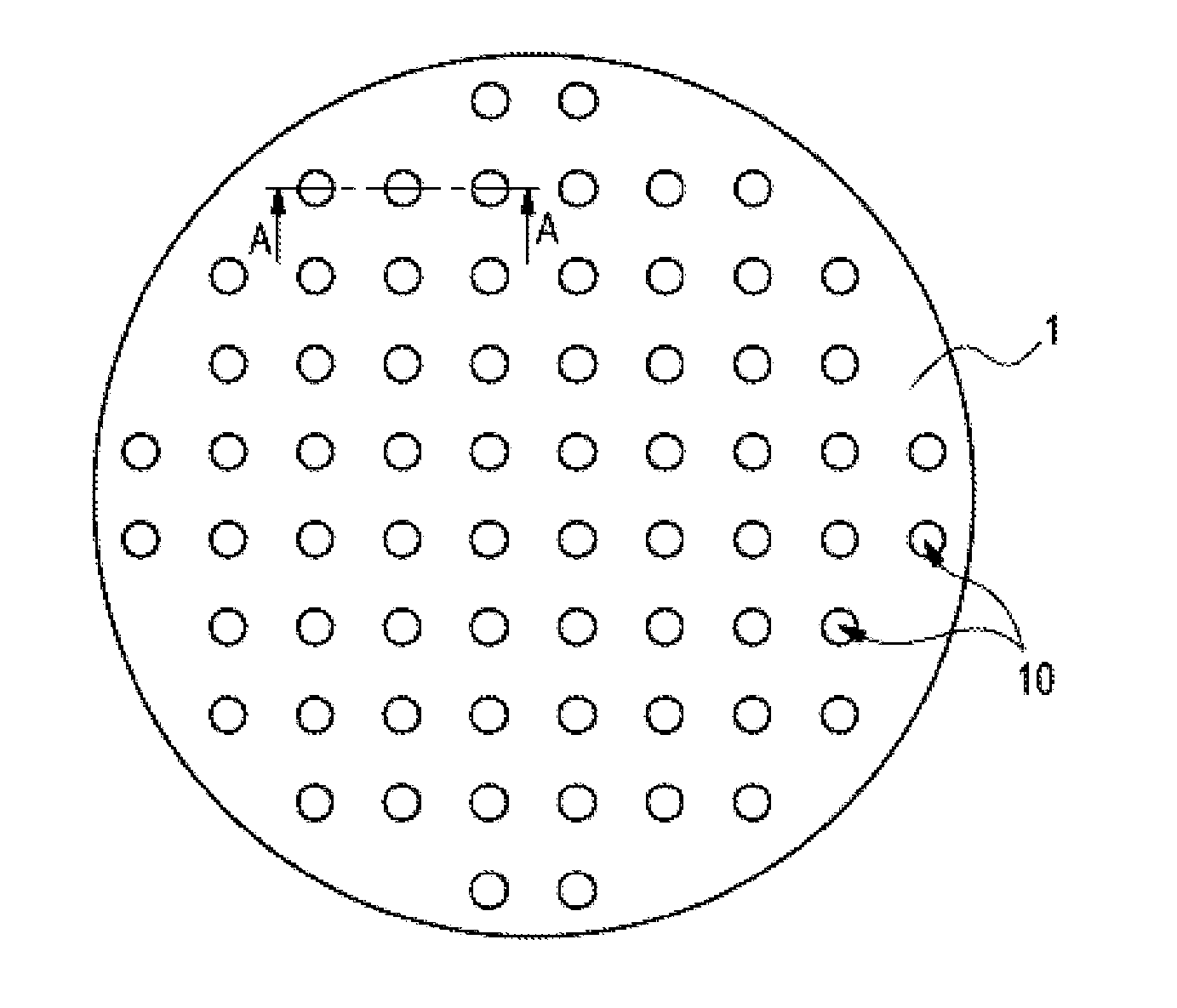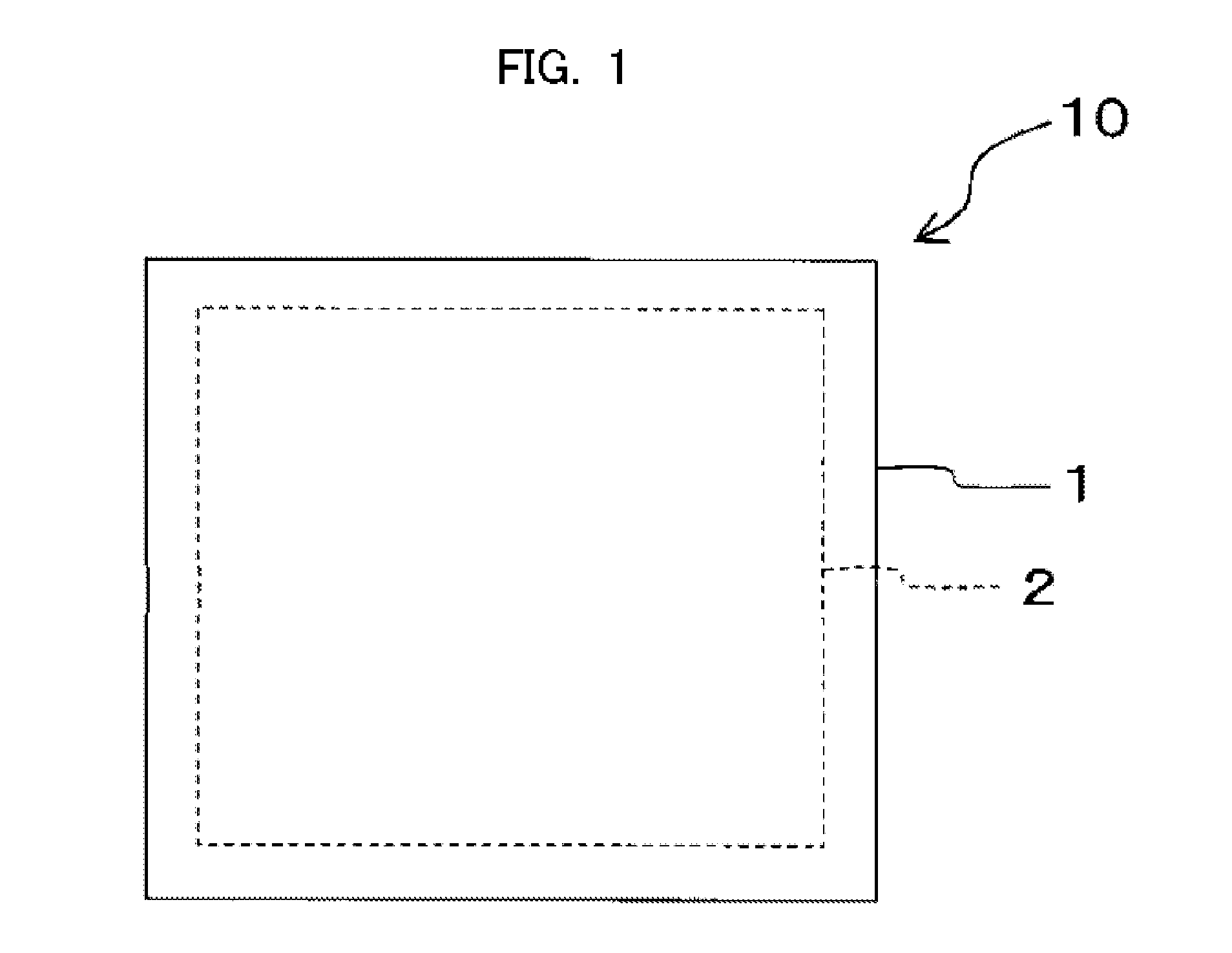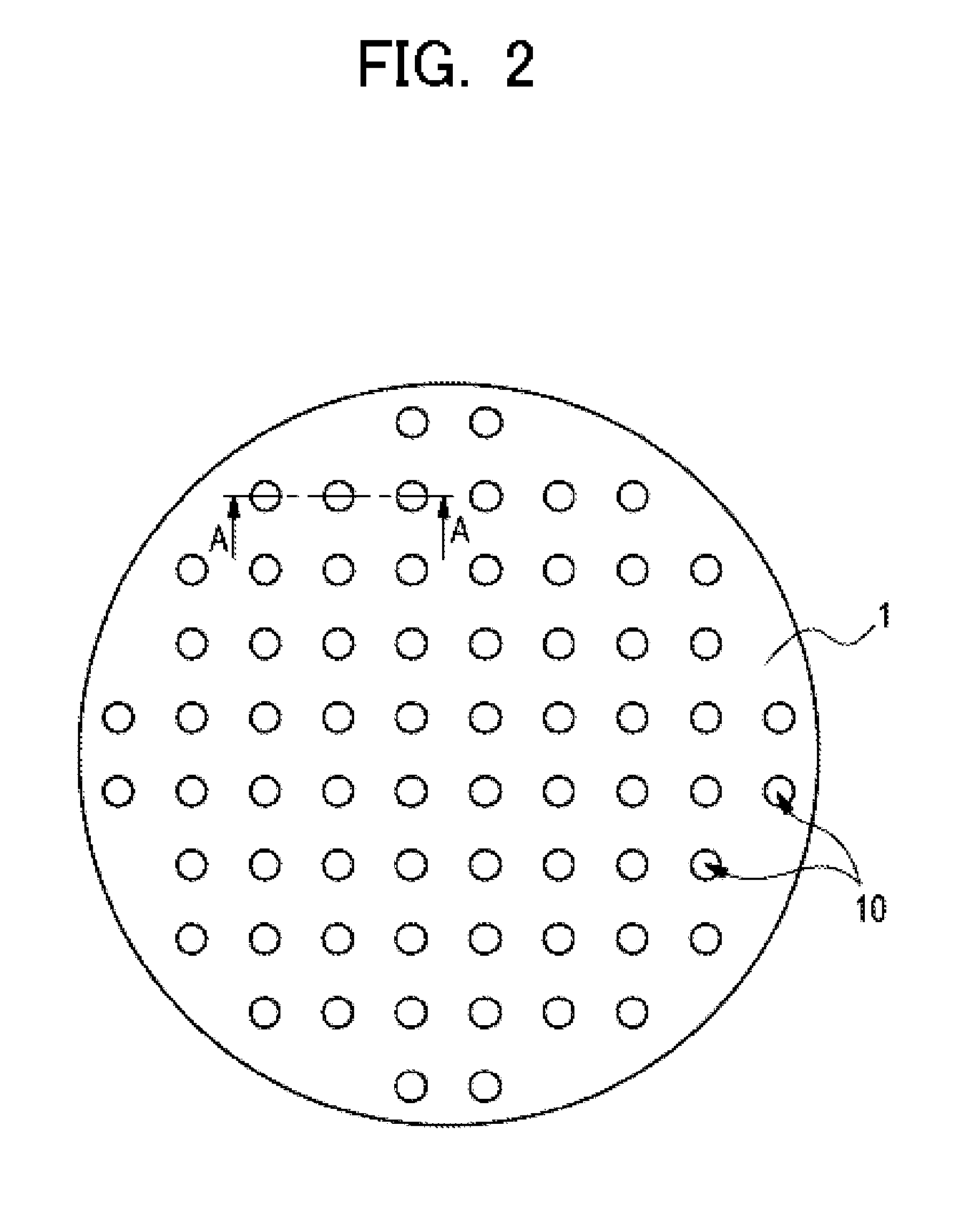Dispersion composition, polymerizable composition, light-shielding color filter, solid-state image pick-up element, liquid crystal display device, wafer level lens, and image pick-up unit
a polymerizable composition and composition technology, applied in the direction of photomechanical devices, instruments, optical elements, etc., can solve the problems of reducing the light-shielding performance at the peripheral region of the light-shielding film, affecting pattern formability, and increasing the amount or use of carbon black, etc., to achieve high light-shielding properties, high dispersibility of titanium black, and high sedimentation of titanium black
- Summary
- Abstract
- Description
- Claims
- Application Information
AI Technical Summary
Benefits of technology
Problems solved by technology
Method used
Image
Examples
example 1
Preparation of Titanium Black Dispersion
[0401]After the following composition 1 was kneaded with a kneader for 30 minutes, the kneaded product was subjected to high viscosity dispersion processing using two rolls, thereby obtaining a dispersion.
[0402]Composition 1[0403]Titanium black having average primary particle diameter of 75 nm (13M-C; manufactured by Mitsubishi Materials Corporation): 39 parts[0404]Propylene glycol monomethyl ether acetate: 60 parts
[0405]To the obtained dispersion, the following composition 2 was added. The mixture was stirred under the condition of 3,000 rpm using a homogenizer for 3 hours. The obtained mixed solution was subjected to a dispersion process using a dispersing machine (trade name DISPERMAT; manufactured by Getzmann GmbH) with the use of zirconia beads having a diameter of 0.3 mm for 4 hours, thereby obtaining titanium black dispersion A (hereinafter, referred to as “TB dispersion A).
[0406]Composition 2[0407]30% (by mass) propylene glycol monomet...
example 33
Production of Solid-State Image Pick-Up Element
Preparation of Chromatic Colored Polymerizable Composition
[0458]A mixed liquid containing 40 parts of the following pigments, 50 parts of 30% solution of DISPERBYK-161 (manufactured by BYK Chemie GmbH) as a dispersant, and 110 parts of propylene glycol monomethyl ether as a solvent was mixed and dispersed using a bead mill for 15 hours, thereby preparing a pigment dispersion (P1).
[0459]Chromatic Color Pigment for Forming Each of RGB Colored Pixels[0460]Pigment for red (R): C.I. Pigment Red 254;[0461]Pigment for green (G): mixture of C.I. Pigment Green 36 and C.I. Pigment Yellow 219 (mass ratio: 30 / 70); and[0462]Pigment for blue (B): mixture of C. I. Pigment Blue 15:6 and C.I. Pigment Violet 23 (mass ratio: 30 / 70).
[0463]Coating liquids R-1, G-1, and B-1 were each prepared by stirring and mixing the dispersion-processed pigment dispersion (P1) with the following materials so as to form the following composition ratio.
Composition
[0464]
Colo...
example 34
Production of Liquid Crystal Display Device
Production of Chromatic Color Colored Polymerizable Composition
[0469]Coating liquid R-2 was prepared by stirring and mixing the dispersion-processed pigment dispersion (P1) with the following materials so as to form the following composition ratio.
Composition
[0470]
Colorant (pigment dispersion (P1)): 200 partsPropylene glycol monomethyl ether acetate (PGMEA:19.20 partssolvent):Ethyl lactate:36.67 partsResin (40% PGMEA solution of benzyl methacrylate / 33.51 partsmethacrylic acid / 2-hydroxyethyl methacrylatecopolymer (molar ratio = 60 / 22 / 18)):Ethylenic unsaturated double bond-containing12.20 partscompound (dipentaerythritol hexaacrylate):Polymerization inhibitor (p-methoxy phenol):0.0061 parts Fluorine-containing surfactant (F-475; 0.83 partsmanufactured by DIC Corporation):Photopolymerization initiator (trihalomethyl0.586 partstriazine photopolymerization initiator):
[0471]Coating liquids for green (G) color and blue (B) color were prepared in t...
PUM
| Property | Measurement | Unit |
|---|---|---|
| particle diameter | aaaaa | aaaaa |
| particle diameter | aaaaa | aaaaa |
| particle diameter | aaaaa | aaaaa |
Abstract
Description
Claims
Application Information
 Login to View More
Login to View More - R&D
- Intellectual Property
- Life Sciences
- Materials
- Tech Scout
- Unparalleled Data Quality
- Higher Quality Content
- 60% Fewer Hallucinations
Browse by: Latest US Patents, China's latest patents, Technical Efficacy Thesaurus, Application Domain, Technology Topic, Popular Technical Reports.
© 2025 PatSnap. All rights reserved.Legal|Privacy policy|Modern Slavery Act Transparency Statement|Sitemap|About US| Contact US: help@patsnap.com



